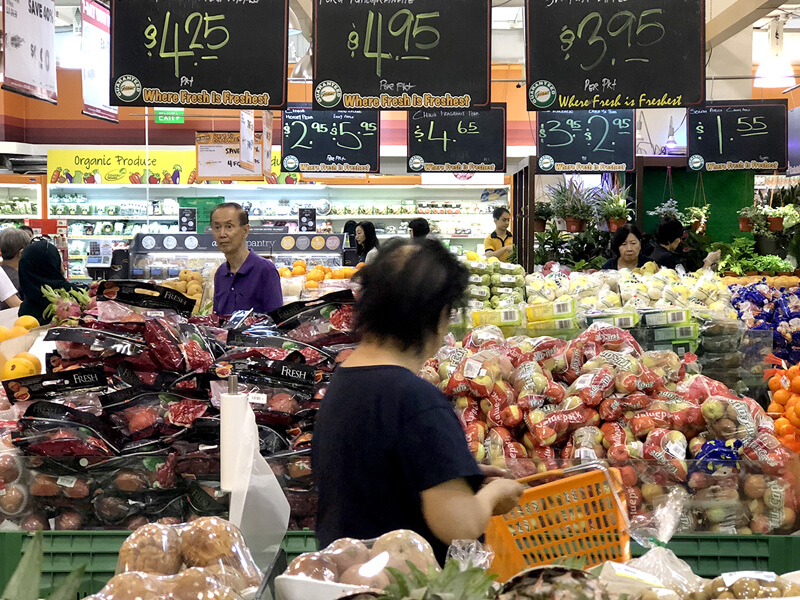Despite some countries like New Zealand reporting that it has eliminated the coronavirus, others all over the world are still clocking in daily active cases. Having been one of the few countries to achieve this feat, New Zealand is looking to lift all restrictions while remaining wary of the unseen cases that can throw a silent wrench in their efforts.
As the pandemic works its way through every facet of our lives, analysts have monitored and reported trends showing a drastic change in the dynamics in which consumers and businesses interact. With movement restrictions being lifted worldwide thus allowing businesses to slowly open up, an unfamiliar landscape may greet business owners. Fortunately, with the help of industrial performance reports such as the Adobe’s Business Continuity whitepaper, there are silver linings that can help businesses navigate and hopefully embrace these changes.
The theme central to the Adobe whitepaper is one that puts a premium on customer’s experience and how they are engaged in the digital space. There are six recommendations put forth, supplemented by examples of how these are adopted by businesses in the region.
1. Understand your customers and how they want to engage this moment.

Back in early March where the world was just realizing the virality SARS-Cov-2 virus, the worldwide shortage for personal protective equipment and hygiene items paved the way for new entrants into the market. With little to no stocks, a “loyalty shock” occurred as consumers pivoted to other brands as they seek to protect themselves and their loved ones.
To add, digitalizing without paying attention to the consumer needs may lead to poorly designed digital mediums which in turn can cause more frustration rather than a benefit. It is reported that app abandonment after a single use stands at 21%, and within the first three days after installation, an app loses 77% of its daily active users.
App abandonment is just one example to reflect how a consumer/user who interacts with a business’s digital medium does so out of a particular and urgent need/purpose. Hence, empathizing with the consumer’s changing needs and understanding the drivers behind their behaviour would be critical in identifying unique consumer groups. This is central to ensuring individualized content delivery that will translate to ideal outcomes for both the consumer and the business.
Some examples where targeting the right content for consumer’s needs are adopted amidst the pandemic can be seen in the following sectors:
Retail: Priority shopping hour for vulnerable groups / Product recommendations
Finance: Banks providing fiscal relief to enterprises
Healthcare: Location-specific advice for medical clinics
2. Enhance communications to support meaningful relationships

With employers being at the top of the list as credible sources of information, businesses can leverage this to their benefit by communicating updates (geographically specific) that matter to both staff and consumers. Some examples are policy and procedural updates, special offers, and initiatives that can facilitate how they manage their challenges.
The combination of transparency and pertinence while communicating with consumers can reinforce the consumer-product/service relationship which will in time foster brand loyalty. Other ways that loyalty can be nurtured are by taking the initiative to offer support in troubleshooting urgent issues, and using data to personalize relevant communication in a regular and prompt manner.
Some industries showing examples how meaningful relationships and brand loyalty can be fostered are:
Telecommunication: Television channels care pack
Insurance: COVID19 support for SMEs
Electronics: Gaming company repurposes manufacturing line to produce and donate 5 million masks
3. Foster strong community and connectivity

As individuals become more isolated as a result of social-distancing and low-interaction measures, community support is crucial in ensuring that people stay connected. With the increase in smartphone ownership in the region, businesses should capitalize on this and allow employees to shift their content engagement online.
Some industries where initiatives to foster community relations can be seen are:
Fitness: Virtual community workout
Travel: National carrier brings exchange student’s home
Restaurants: Food delivery company sets up gift-a-meal initiative for healthcare workers
State: Virtual tour of Presidential residence during Hari Raya
4. Shift brick and mortar strategies to better serve customers

In response to restriction measures, companies have turned to alternative various low-touch modes where consumers can obtain their purchased goods (eg. delivery services, in-store pickup option, decentralized postal boxes). To supplement, businesses would need to constantly communicate their operation hours and share what are the alternative services available across all their outlets.
We see this often in the following industries:
Restaurant: Facebook group created to help restaurants do direct delivery
Interior Design: Virtual showrooms and e-meetings
5. Encourage adoption of digital self service

Pivoting to digital services swiftly in response to changing consumer needs will give businesses an edge but this has to be supported by onboarding efforts to help users have a positive experience, and release personnel to prioritize more critical functions. In addition, privacy and data concerns should also be addressed and communicated clearly.
Technology: Using AR to combat COVID19
Financial: Digital adoption rates among seniors the highest
Media and Entertainment: Social media platform downloads reaches 2 billion / Getting to know digital consumers
6. Embrace new ways of working

As the health crisis accelerated the adoption of remote work, teething issues may have arisen but embracing the benefits may outweigh the costs further down the road. It is noteworthy to share that tech giants have taken the lead to enable most of their workforce to continue remote work till the end of the year, with Facebook’s founder sharing his optimism for the future of work.
Some of the benefits are having to decentralize data and information more widely which will then encourage decentralize decision-making that would be helpful for geographical specific distinctions in culture and consumer behaviours. To add, this would also improve the quality of consumer’s input and a better understanding of how business decisions impact their lives.
Efforts in embracing remote work can be seen in the following example:
Government: Ministers conduct virtual meetings
Helpful government assistance for businesses
Specific to Singapore, the government has introduced a variety of schemes that businesses can utilize to enhance their digital capabilities. The following examples shared on Enterprise Singapore – a state-run agency supporting enterprise development – are some of the initiatives that businesses can look forward to.
Enhanced SMEs Go Digital Programme
Under the Productivity Solutions Grant (PSG), companies can tap on an expanded list of digital support solutions to ramp up their business capabilities. Pre-approved solutions can be awarded a maximum grant of 70% to 80%.
Advanced Digital Solutions
Up to 80% of funding support can be provided for enterprises that have the necessary resources to take on more progressive technological solutions that can be applied not just internally but across the industry.
User Interface / User Experience Support
In partnership with IMPixel companies can attend free half-day and full-day workshops that provide them with an understanding of the basics and importance of UI/UX optimization. Other initiatives include complimentary 1-to-1 Consultation Sessions, Project-Based Coaching with an expert, and the use of Pixel’s Usability Testing Lab.
While the country begins its phased approach to re-opening the economy, the above are just some examples of government support for businesses and more initiatives may be introduced in the future as the situation evolves.
At a more national level, the Singapore government has also committed to hiring 1000 digital ambassadors from various walks of life to personally reach out to businesses on the ground to aid with digital adoption practices. All in a bid to ensure inclusive progression and economical prosperity while assisting fellow Singaporeans tide through the financial impact of the COVID19 crisis.





